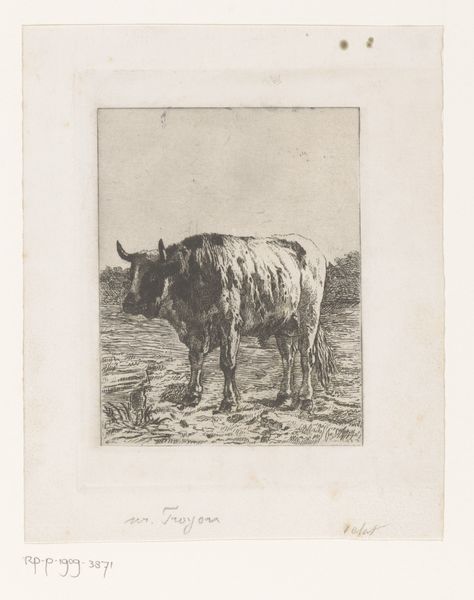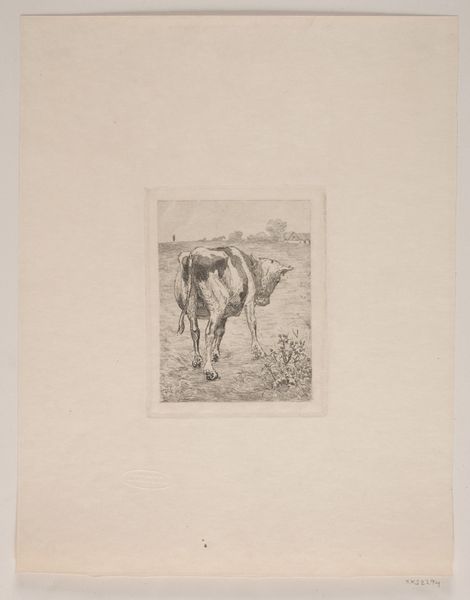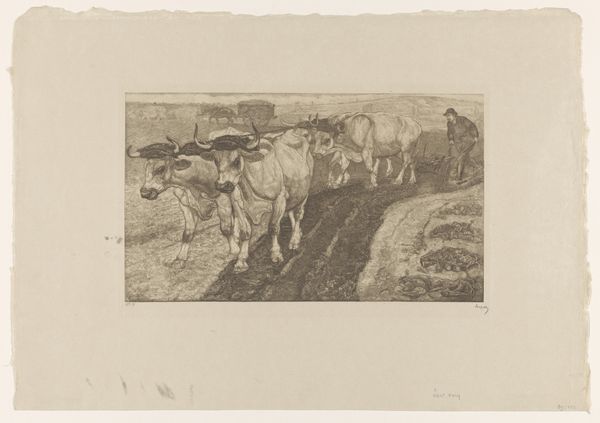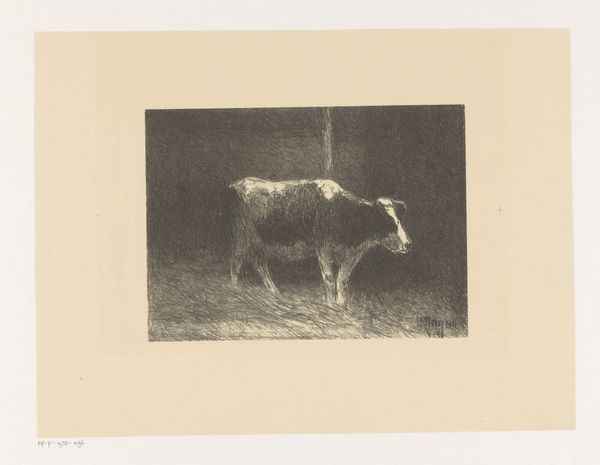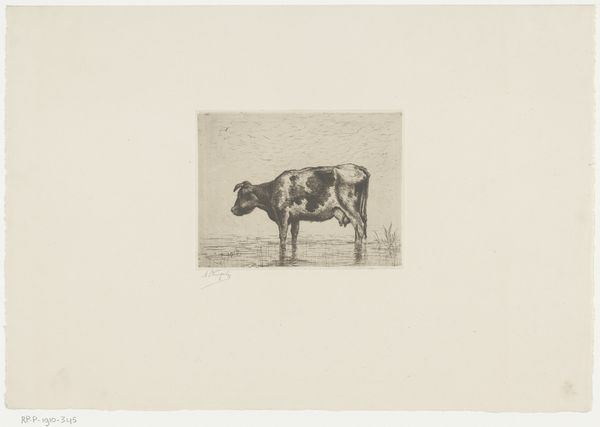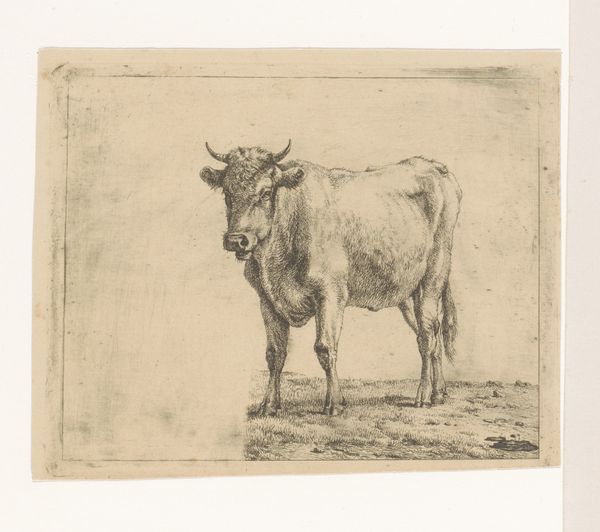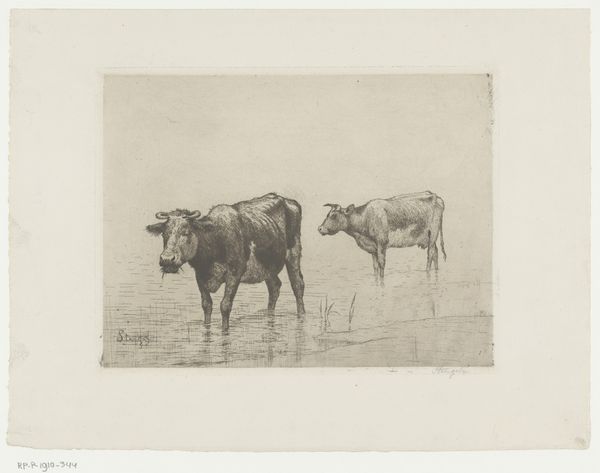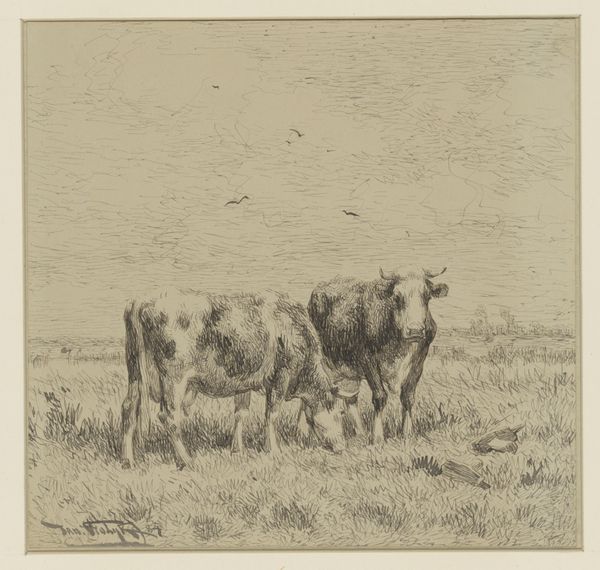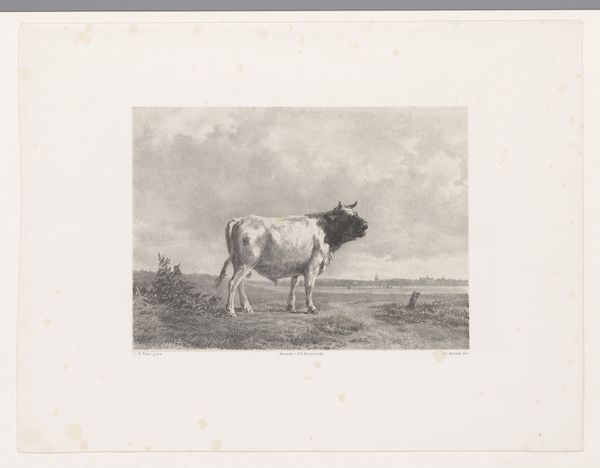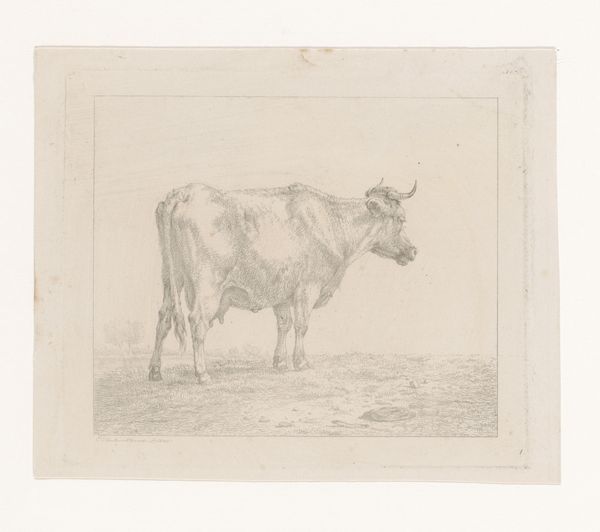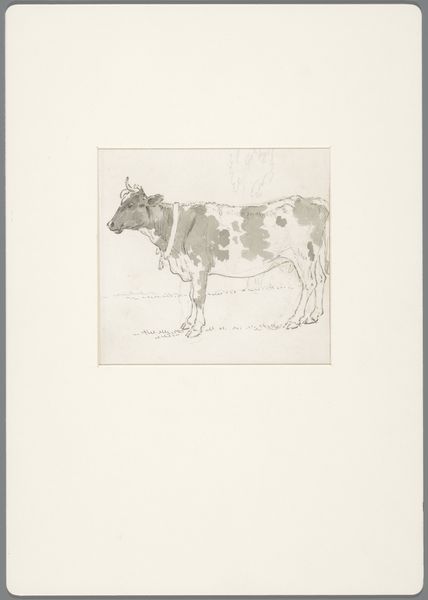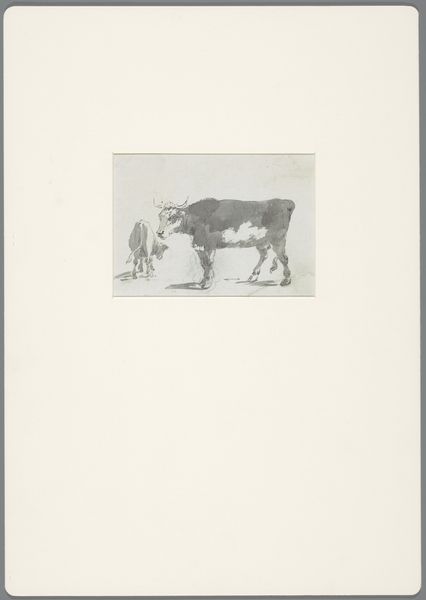
print, etching
#
animal
# print
#
etching
#
landscape
#
genre-painting
#
watercolor
#
realism
Dimensions: height 160 mm, width 117 mm
Copyright: Rijks Museum: Open Domain
Curator: Welcome. We are standing before Auguste Danse's etching from 1874, titled "Stier in de wei"—"Bull in the Meadow" in English. Editor: The bull seems almost lonely in that vast expanse. The stark, detailed foreground fading into a hazy background creates a quiet melancholy. It’s like a portrait of rural isolation, almost… bucolic, yet poignant. Curator: Interesting observation. Danse, a prominent figure in Belgian Realism, frequently turned his attention to the rural landscapes and everyday life that underpinned burgeoning industrial society. The scale of these rural environments are relevant, speaking to shifting dynamics. Editor: You can see that. Looking closely, it appears the bull is strategically placed. The work highlights animal labour through a modern lens. Can we ignore, in the modern day, this relationship that involves not only cattle but land management too? Curator: The beauty of realism, and Danse’s approach, lies in depicting these agricultural subjects as neither idealized nor overly romanticized but depicting labor, whether animal or human, is inevitably shaped by the market, isn’t it? I imagine in the 19th century it reflected a burgeoning industrial and capitalist expansion in Belgium. Editor: Absolutely. There's a tangible rawness here that's less about the beauty and more about an engagement with our own consumption. Danse isn't glorifying; he's showing us the reality and, by extension, inviting us to consider the exploitation inherent in the landscape tradition. What is romanticized or glorified and how can art challenge assumptions? Curator: Indeed. Etchings like this often served as accessible images for a growing middle class, educating urban dwellers about agrarian life while also reflecting their complex relationship to the rural economy and these crucial commodities of the land and animals. It makes a valuable, and in some cases forgotten, record of labor in its period, no? Editor: Precisely. Danse, intentionally or not, gives agency to this singular animal, encouraging modern audiences to challenge social-economic inequities and animal welfare as they once were. Curator: Thank you for framing it in that light. The artist provides us with fertile territory, so to speak, to continue these considerations through new contemporary artistic expression. Editor: Exactly! It is a work that demands a critical engagement and inspires awareness of interconnected ecologies.
Comments
No comments
Be the first to comment and join the conversation on the ultimate creative platform.
